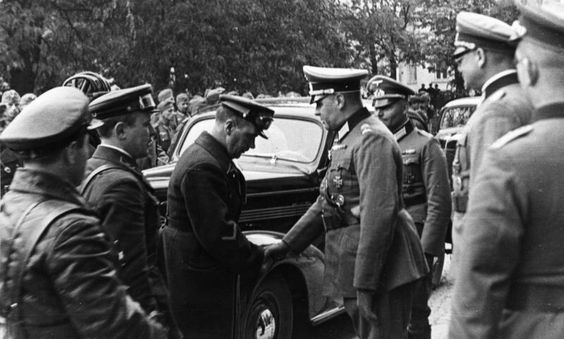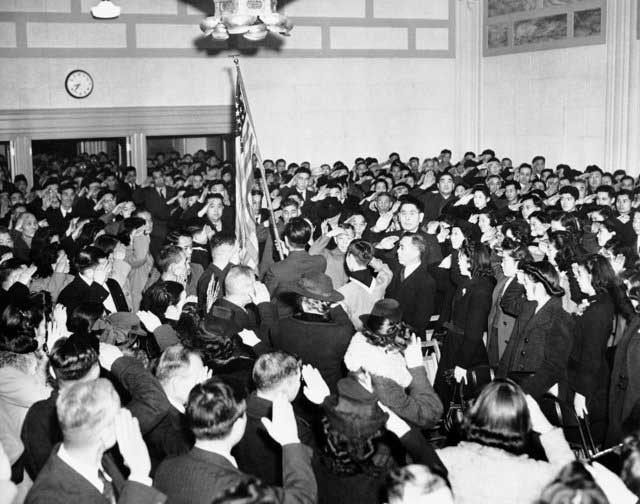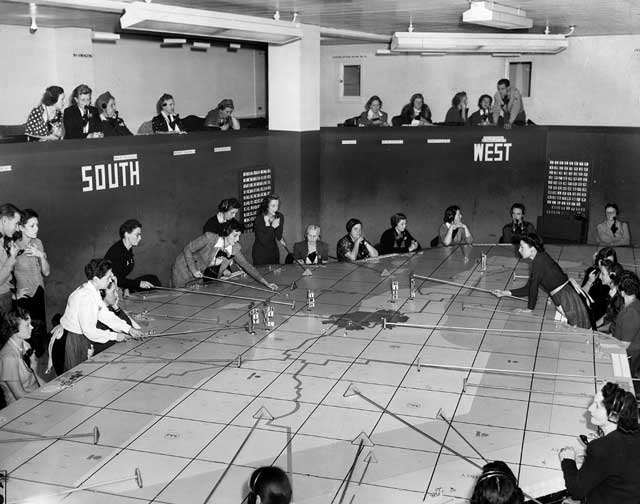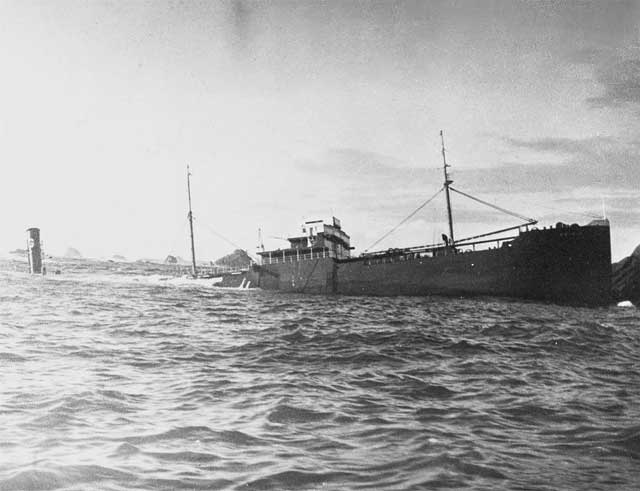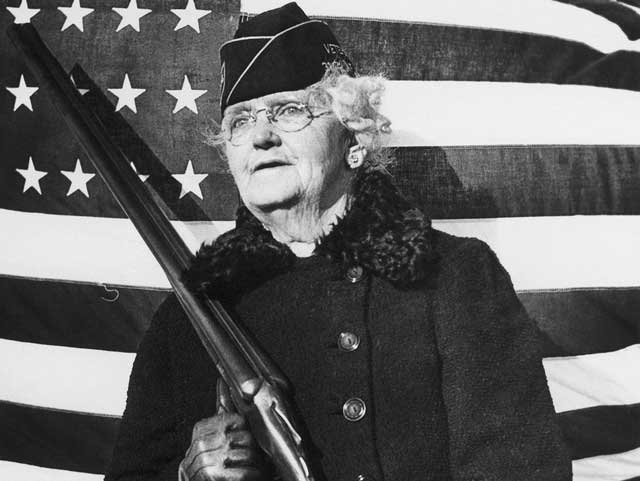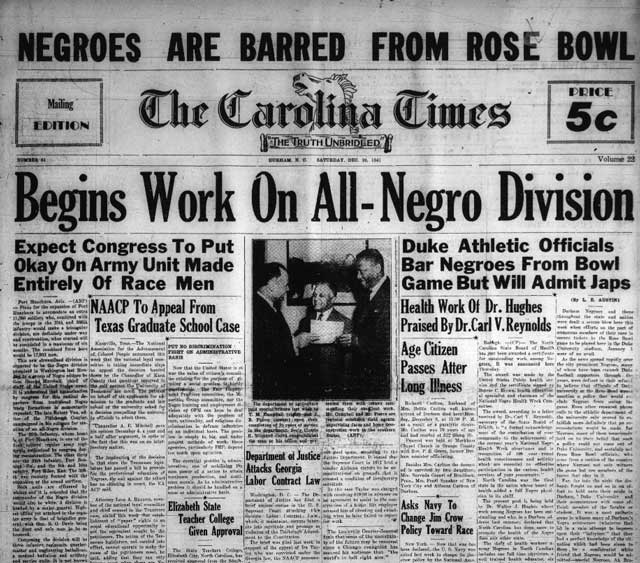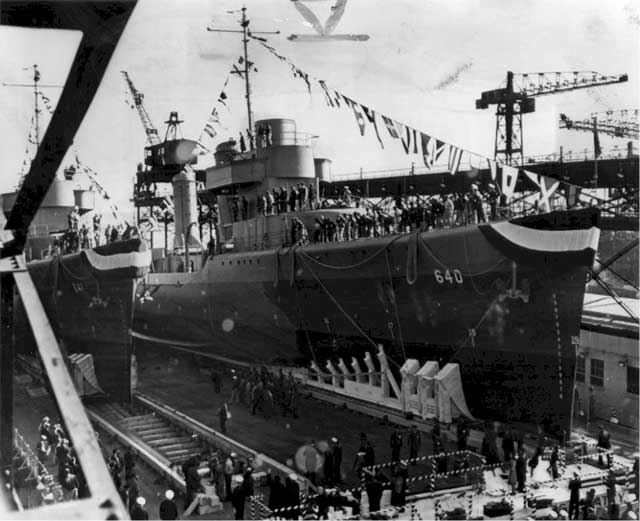Thursday 25 December 1941
 |
| The British surrender Hong Kong, 25 December 1941. |
Battle of the Pacific: The Japanese enter St. Stephen's College very early on the morning of
25 December 1941 and commit heinous atrocities. The college is on the front lines and is being used as a field hospital. Seeing the Japanese approach, two doctors go out to meet them. The Japanese escort them away (their mutilated bodies are found much later) and then enter the hospital. There, the Japanese bayonet British, Canadian, and Indian patients and then imprison the survivors in an upstairs room. Later, another group of Japanese soldiers enter after the front line has moved further south and commit further atrocities. They take some or all of the female nurses away, rape them, and then murder them.
 |
| Japanese soldiers entering Hong Kong, 25 December 1941. |
The Japanese soldiers also take two Canadian soldiers outside and mutilate and murder them. The Japanese later burn all of the bodies apparently in order to hide the evidence, so the exact number of victims is unknown. However, later in the war, parts of 13 bodies are found and buried. It is estimated that the total number of victims at St. Stephen's College may exceed 100.
 |
| Japanese troops march into Hong Kong, 25 December 1941. |
The battle goes poorly for the Commonwealth troops throughout the day, nearing the port facilities. The Japanese bombers focus on British shipping in Hong Kong Harbor, and Royal Navy destroyer HMS Thracian runs aground and is scuttled. The British have no water, as the Japanese control the water reservoirs. The Governor of Hong Kong, Sir Mark Aitchison Young, sees a humanitarian crisis developing and personally goes to the Japanese Headquarters on the third floor of the Peninsula Hong Kong Hotel and surrenders in the afternoon of 25 December 1941. This is the first surrender of a British Crown Colony (but not the last). The events of 25 December 1941 make it known in Hong Kong as "Black Christmas."
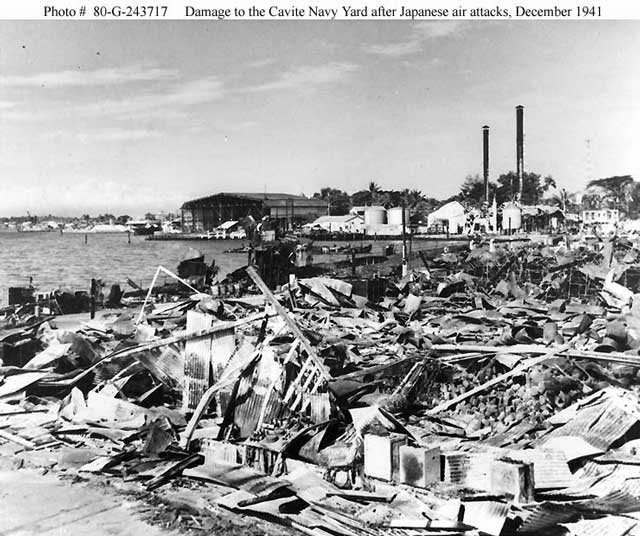 |
| Damage to Cavite Navy Yard caused by Japanese bombing, late December 1941. |
In the Philippines, the Japanese land forces in Jolo, the capital of the former Sultanate of Sulu. The 300 Filipino policemen there surrender quickly. This concludes the campaign in Davao, a useful launching pad for attacks on Borneo and the Dutch East Indies. At Cavite Navy Yard, Manila Bay, Commander Richard C. Voge scuttles his submarine, USS Sealion, due to bombing damage.
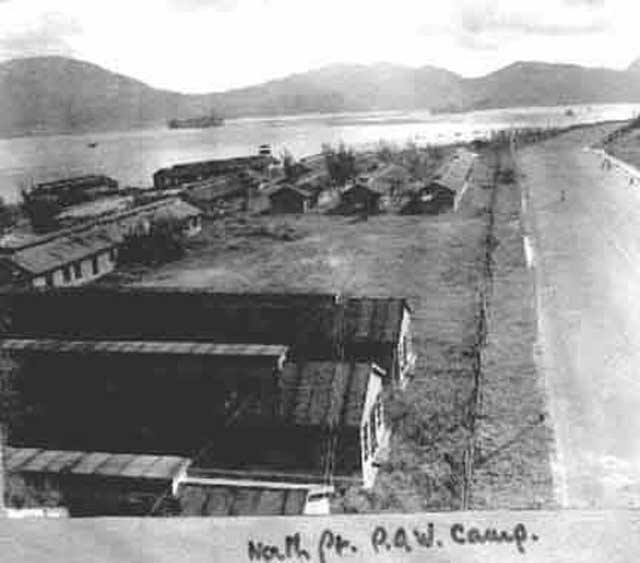 |
| North Point POW Camp, the "final" destination for many Commonwealth soldiers. It has no plumbing, is badly damaged, and there are unburied bodies of Chinese at the east end of the camp (Mansell.com). |
The Japanese assault on Manila continues to make good progress. The Allied forces north of Manila retreat to their second defensive line. Lieutenant General Douglas MacArthur continues evacuating people and supplies from Manila south into Bataan, hoping to hold out there indefinitely. The local US Army Air Force units move most aircraft from Ternate, Nichols Field, Clark Field, Nichols Field, and Del Carmen south to Bataan. The 17th and 20th Pursuit Squadrons begin operating from Lubao, Luzon. Other air units transfer to Cabcaben, Luzon.
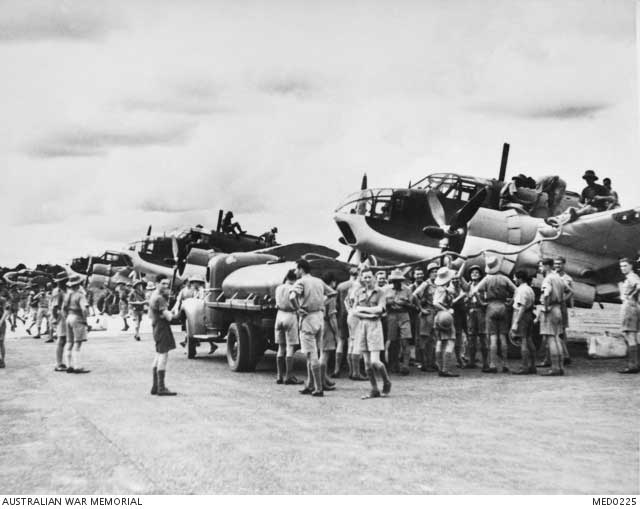 |
| "Sembawang, Singapore, Malaya. 25 December 1941. Australian built Beaufort bomber aircraft refueling on arrival in Malaya, some hands in the crowd holding up the hose from the tanker. These aircraft are fast and highly maneuverable but were unarmed. Of the six that were flown to Malaya, five returned to Australia with one being kept for reconnaissance purposes." Australian War Memorial MED0225. |
In Borneo, the Japanese at Kuching finally find the Dutch airfield nearby. They capture the airfield against light resistance by 16:40. The Punjab regiment nearby continues pulling back to the Sinkgkawang region. Offshore, Japanese submarine I-66 torpedoes and sinks Dutch submarine K XVI near Kuching, a rare instance of one submarine torpedoing another (an alternate theory is that it hit a Japanese mine while exiting the Gulf of Siam). All 36 men aboard the K XVI perish.
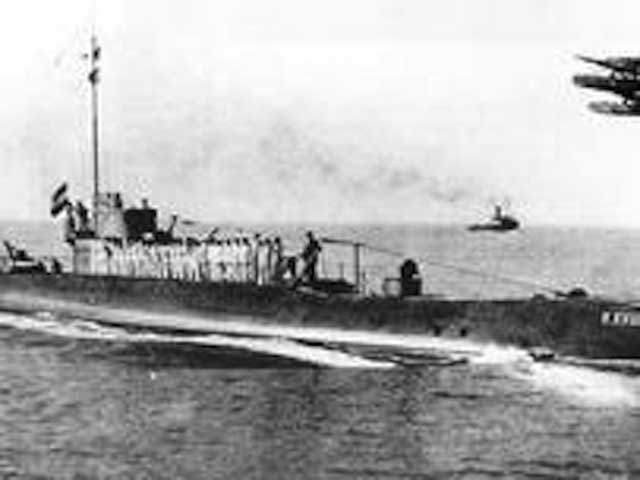 |
| Dutch submarine K XVI, sunk on 25 December 1941. Its wreckage is discovered in 1978. There are various conspiracy theories surrounding this submarine and how its crew supposedly spotted the Japanese main carrier strike force, Kido Butai, as it was heading toward Hawaii in early December 1941 |
In Burma, the Japanese bomb Rangoon again. This time, they send 27 Sally bombers escorted by about 30 fighters. The American Volunteer Group (AVG, or "Flying Tigers") intervene. While suffering no losses, the Americans take a heavy toll on the Japanese aircraft. Altogether, the Japanse lose 10 fighters and 25 bombers, while two AVG pilots are forced to make crash landings. Duke Hedman claims his fifth victory to become an Ace.
 |
| "HMS KINGSTON turning at speed during an antisubmarine patrol." This photo was taken aboard Dutch destroyer HNLMS Isaac Sweers in the Eastern Mediterranean on 25 December 1941. © IWM (A 8052). |
Eastern Front: The drama surrounding General Guderian, the commander of German Second Panzer Army who is directing a difficult withdrawal south of Moscow, reaches a fever pitch on 25 December 1941. The surface issue is how far and how fast Guderian may withdraw his troops, but the underlying issue is his growing feud with Army Group Center commander Field Marshal Guenther von Kluge. Hitler has ordered the troops to stop where they are and fight regardless of the conditions, but Guderian has allowed large-scale withdrawals. While some army group commanders might pass this off as necessary line readjustments, von Kluge is not one of them - at least as far as Guderian is concerned.
 |
| On December 25, 1941, President Franklin Roosevelt and Prime Minister Winston Churchill attended a church service on Christmas morning. They have a lot to pray for. Note the cane that President Roosevelt is carrying and the burly man next to him to prevent any falls. |
Guderian's withdrawals aren't the only issue. When OKH operations chief General Franz Halder asks Guderian to use the 3d and 4th Panzer Divisions, which are in reserve near Orel, to move forward and defend Chekalin and Belev, Guderian does not comply. Instead, he claims that the divisions are necessary to cover the withdraw of adjacent Second Army. Hitler intervenes and shifts the two divisions to XXIV Panzer Corps, which is in the area where Halder wants them shifted. It is a clear slap at Guderian. If there is one thing that Hitler cannot abide, it is military challenges to his authority, and that is exactly what Guderian appears to be doing.
 |
| Canadian Pilot Officer R. Locke of Vernon, BC, delivers plates during Airmen’s Christmas Dinner on 25 December 1941, at an RCAF Bomber Sqn "Somewhere in England." Royal Canadian Air Force. |
However, the main flashpoint of the controversy is Guderian's withdrawals. After dark, von Kluge reviews the day's situation reports and finds that Guderian has retreated even further than he had feared, to the line Oka-Zusha. Kluge calls Guderian and demands an explanation, to which Guderian replies:
In these unusual circumstances, I lead my army in a manner I can justify to my conscience.
Kluge then immediately calls Halder and relays Guderian's reply, commenting:
I have the greatest respect for General Guderian. He is a fantastic commander. But he does not obey, and I can only transmit and execute the Fuehrer's orders if I can rely on my army commanders.
However, Kluge is very careful to shade his account so that it does not appear as if he is personally attacking Guderian, saying:
I am basically entirely on Guderian's side, one cannot simply let himself be slaughtered. But, he must obey and keep me informed.
Halder immediately calls Hitler, who almost as quickly calls Kluge and says that he will:
do what is necessary to Generaloberst Guderian.
Hitler, who is about to start his midnight war conference, then has Field Marshal Keitel draft an order directing Guderian to relinquish his command and return to Berlin to await any further orders. This is delivered early on the 26th, along with an order forbidding Guderian from issuing any farewell statements to his troops. General Rudolf Schmidt replaces Guderian.
 |
| Visiting WRENS and sailors have a singalong aboard HMS Wellesley in Granton on 25 December 1941. © IWM (A 6701). |
In Leningrad, people are starving to death in ever-increasing numbers. On Christmas day alone, about 3700 perish. Caloric intake is below subsistence levels, and those who do not or cannot work get even less than the workers and the fighters.
 |
| Lieutenant-General Takashi Sakai, Governor of Hong Kong from 25 December to 20 February 1942. He will be tried for war crimes, found guilty, and hanged in 1946. |
American Homefront: Bing Crosby debuts Irving Berlin's new seasonal composition, "White Christmas," on his NBC radio show The Kraft Music Hall. It is an immediate sensation, receiving many requests for it at radio stations, but Crosby does not think much of the song and hasn't even recorded it as a single yet. He ultimately does record it - in 18 minutes - on 29 May 1942 with the John Scott Trotter Orchestra. "White Christmas" will not be released as a single until 30 July 1942. It goes on to become the best-selling single of all time - a record it still holds.
December 1941December 1, 1941: Hitler Fires von RundstedtDecember 2, 1941: Climb Mount NiitakaDecember 3, 1941: Hints of Trouble in the PacificDecember 4, 1941: Soviets Plan CounteroffensiveDecember 5, 1941: Soviets Counterattack at KalininDecember 6, 1941: Soviet Counterattack at Moscow BroadensDecember 7, 1941: Japan Attacks Pearl HarborDecember 8, 1941: US Enters World War IIDecember 9, 1941: German Retreat At MoscowDecember 10, 1941: HMS Prince of Wales and Repulse SunkDecember 11, 1941: Hitler Declares War on USDecember 12, 1941: Japanese in BurmaDecember 13, 1941: Battle of Cape BonDecember 14, 1941: Hitler Forbids WithdrawalsDecember 15, 1941: The Liepaja MassacreDecember 16, 1941: Japan Invades BorneoDecember 17, 1941: US Military ShakeupDecember 18, 1941: Hitler Lays Down the LawDecember 19, 1941: Brauchitsch Goes HomeDecember 20, 1941: Flying Tigers in ActionDecember 21, 1941: The Bogdanovka MassacreDecember 22, 1941: Major Japanese Landings North of ManilaDecember 23, 1941: Wake Island Falls to JapanDecember 24, 1941: Atrocities in Hong KongDecember 25, 1941: Japan Takes Hong KongDecember 26, 1941: Soviets Land in the CrimeaDecember 27, 1941: Commandos Raid NorwayDecember 28, 1941: Operation Anthropoid BeginsDecember 29, 1941: Soviet Landings at FeodosiaDecember 30, 1941: Race for BataanDecember 31, 1941: Nimitz in Charge2020



